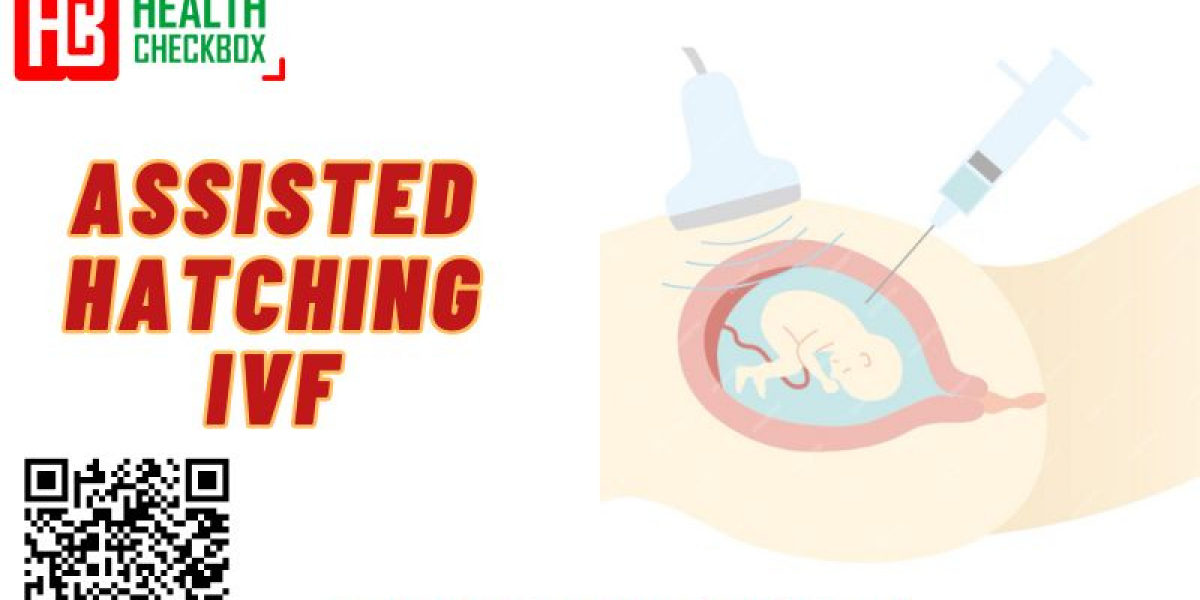In the realm of fertility treatments, assisted hatching is a revolutionary technique that has brought hope to countless couples struggling with infertility. Often used in conjunction with in vitro fertilization (IVF), assisted hatching IVF can significantly improve the chances of embryo implantation and a successful pregnancy. But what exactly is assisted hatching, how does it work, and why is it a game-changer for IVF patients? Let’s dive into the science and significance behind this powerful procedure.
What is Assisted Hatching?
Assisted hatching is a laboratory procedure used during the IVF process to help embryos implant in the uterine lining more successfully. During a typical IVF cycle, eggs are fertilized outside the body, creating embryos that are then cultured for several days before being transferred into the woman’s uterus.
In nature, the embryo is surrounded by a protective shell called the zona pellucida. Before implantation can occur, the embryo must "hatch" or break free from this shell to attach to the uterine lining. In some cases, the zona pellucida is too thick or tough, making it difficult for the embryo to hatch on its own, which can hinder the implantation process.
Assisted hatching helps the embryo break free from this shell by creating a small hole in the zona pellucida. This can be done chemically, mechanically, or with a laser. The idea is to give the embryo a helping hand, making it easier for the embryo to implant in the uterus, ultimately improving the chances of a successful pregnancy.
How Does Assisted Hatching Work?
The process of assisted hatching IVF typically follows these steps:
- IVF Cycle Initiation: As with any IVF cycle, the first step involves stimulating the ovaries to produce multiple eggs, which are then retrieved.
- Fertilization: The eggs are fertilized in the laboratory, and embryos are cultured for several days.
- Assisted Hatching Procedure: Before the embryo transfer, a small portion of the zona pellucida is removed or weakened using one of several techniques:
Laser Assisted Hatching: A laser is used to create a small hole in the zona pellucida, allowing the embryo to hatch more easily.
Chemical Assisted Hatching: A chemical substance is applied to thin out the zona pellucida, making it easier for the embryo to break free.
Mechanical Assisted Hatching: A fine needle or pipette is used to physically breach the zona pellucida.
- Embryo Transfer: After hatching, the embryo is transferred into the uterus, where it is hoped that it will successfully implant and lead to pregnancy.
Why is Assisted Hatching Important?
The primary benefit of assisted hatching lies in its potential to increase the success rates of IVF by improving the chances of embryo implantation. But why exactly does this technique work?
- Thicker Zona Pellucida: Some women, particularly those of advanced maternal age, may produce embryos with a thicker zona pellucida. This makes it harder for the embryo to hatch naturally, reducing the chances of successful implantation. Assisted hatching helps overcome this barrier.
- Improved Implantation Rates: For certain patients, particularly those with a history of failed IVF cycles or repeated miscarriages, assisted hatching IVF can offer a better chance of success. By facilitating the embryo’s ability to implant, the procedure may result in higher pregnancy rates.
- Aging Eggs: As women age, their eggs may not be as efficient in hatching naturally. Assisted hatching can help older eggs reach the stage where they can successfully implant, potentially addressing one of the challenges associated with age-related infertility.
- Failure to Hatch: In some rare cases, embryos may fail to hatch altogether. Assisted hatching can intervene in such situations, ensuring that the embryo can break free from its shell and increase the chances of implantation.
Who Should Consider Assisted Hatching?
While assisted hatching IVF is a promising procedure, it is not recommended for all IVF patients. It is typically considered for women who fall into one or more of the following categories:
Older women: Women over the age of 37 may benefit from assisted hatching due to the natural changes that occur with egg quality and the zona pellucida as they age.
Repeated IVF failures: Couples who have undergone multiple IVF cycles without success may find that assisted hatching IVF gives them the extra push needed to achieve pregnancy.
Women with poor embryo quality: For women whose embryos are of lower quality, assisted hatching can potentially improve the chances of implantation.
Thick zona pellucida: As mentioned earlier, if the zona pellucida is unusually thick, assisted hatching may be a necessary intervention.
It is important to note that assisted hatching is not a guarantee of pregnancy. Many factors contribute to the success of an IVF cycle, and assisted hatching is just one tool in a fertility clinic’s arsenal. It is crucial to discuss with your fertility specialist whether this procedure is appropriate for your individual case.
Risks and Considerations
Like any medical procedure, assisted hatching comes with some risks. The primary concern is the possibility of harming the embryo during the hatching process. Although the procedure is performed by highly skilled embryologists using advanced technology, there is always a slight risk involved.
Another consideration is that assisted hatching is not always necessary for every patient. Some studies have shown that it may not significantly improve outcomes in women with younger, high-quality embryos. The decision to use assisted hatching IVF should be made based on individual circumstances and after a thorough consultation with a fertility specialist.
Conclusion
The advancement of assisted hatching has given new hope to those undergoing IVF by addressing one of the key obstacles to successful embryo implantation. Whether it’s due to thicker zona pellucida, egg aging, or previous IVF failures, assisted hatching IVF has become an invaluable tool for improving the chances of pregnancy.
As with any medical procedure, it’s important for individuals to carefully consider the potential benefits and risks in consultation with their fertility specialist. While assisted hatching is not a miracle solution for everyone, it is a testament to the ongoing innovations in reproductive medicine that continue to unlock the potential for couples to realize their dreams of parenthood.
By understanding how assisted hatching works, and who it benefits, more people can make informed decisions about their fertility treatments, ensuring they receive the care and support needed to succeed.
More Info -: https://www.characterlist.com/



